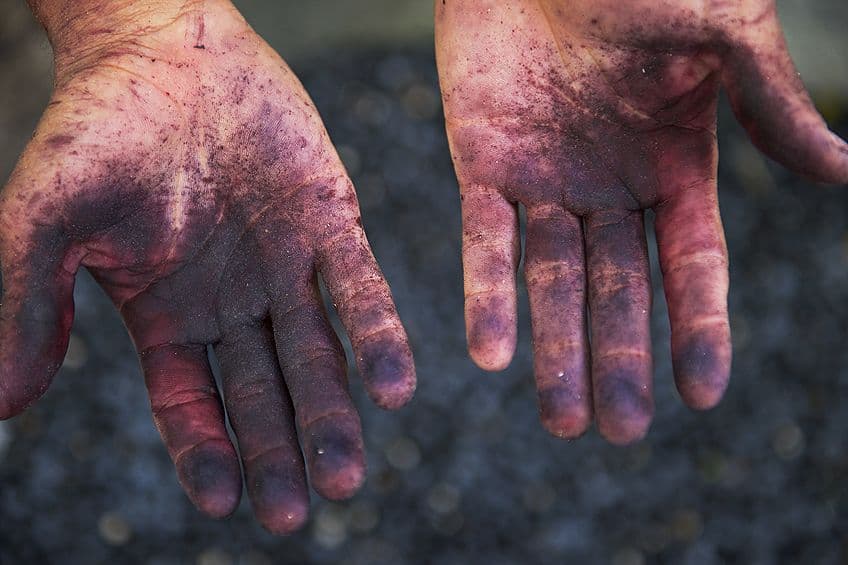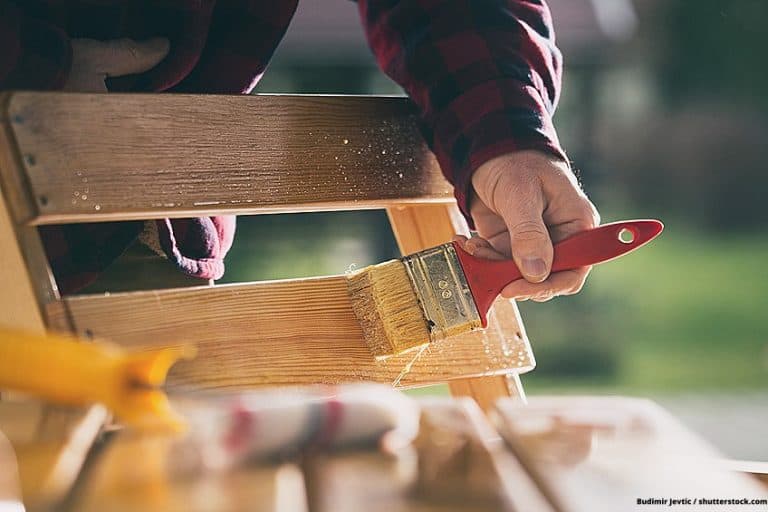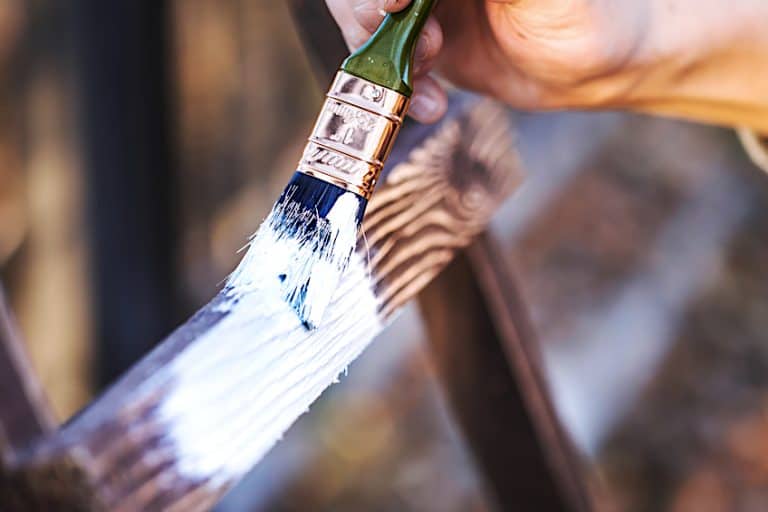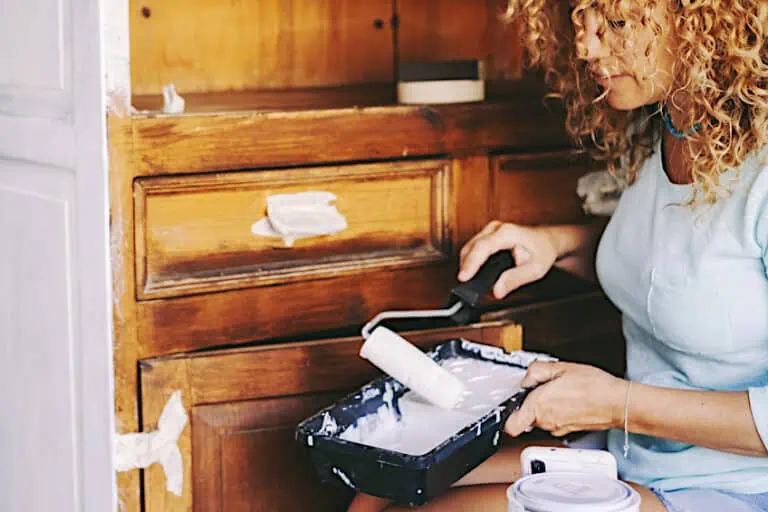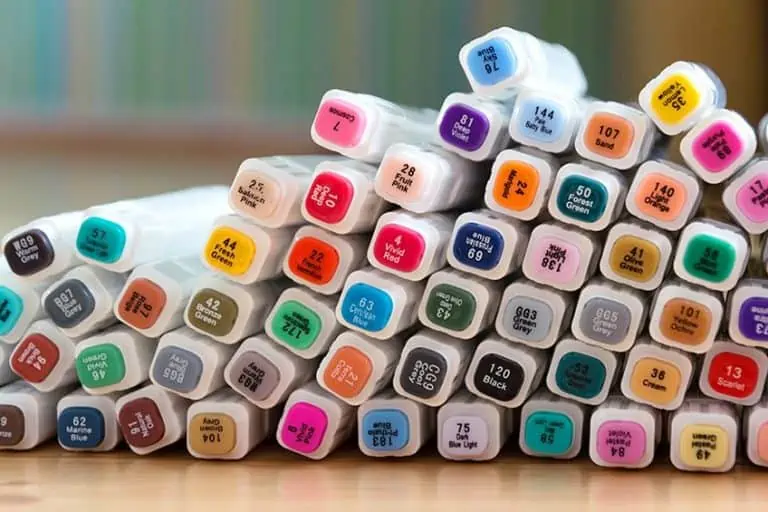How to Remove Wood Stain from Skin – The Best Skin Stain Remover
For those of us that have the privilege of getting our hands dirty with woodworking, we would know all too well not only it rewards us with beauty and functional creations unlike any other but also its therapeutic value that breathes life into our soul. Whether you have completed your 1st birdhouse or resurrected your old fence with locally salvaged planks or begun journeying into homemade furniture, for most woodworker’s novice or master, it remains a hobby that most keep for a lifetime once exposed to. If you are looking for a great place to start in how to remove those unintentional wood stains and want to get them off ASAP, this is the DIY manual for you.
Table of Contents
- 1 Types of Wood Stain
- 2 Using Brushes to Remove Oil- and Water-Based Stains
- 3 Methods for Removing Stain from Hands
- 4 The Safety of Wood Stain Removers
- 5 Preventive Measures for Wood Staining
- 6 Frequently Asked Questions
Types of Wood Stain
You have done everything possible to prevent a possible wood stain on your skin, but unfortunately, you have not been successful. It’s annoying, embarrassing and you’re in a rush to get off, what do you do now? The first step in removing a wood stain on your skin is being able to identify the type of wood stain that you have been applying. It is essential to know what the wood stain contains so that you can decide which removal method would be best. Wood stains for the most part are made from organic components like water and oil.
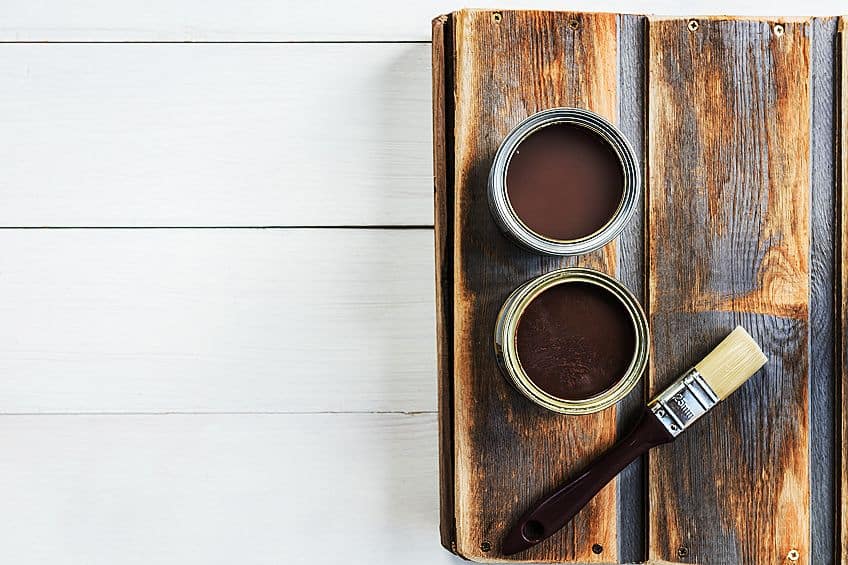
While these on their own are quite easy to clean from your body, it is the binders, resins, and strong dyes that are added to these organic liquids that make wood stains so potent and more challenging to remove. This difficulty to remove is good when it is on the wood, but not your skin. If you can identify the ingredients of our wood stain and its constituents, you are half of the way to removing it from your skin. You can easily find the ingredients of your wood stain online. Let us take a look at some of the most common types of wood stains.
Iron Oxide Wood Stain
Iron Oxide is one of the most widely distributed dye ingredients added to wood stain products. It is derived from both iron ore and oxidized metal. Iron Oxide can be added to both water and oil-based stains. Its primarily used in exterior wood finishes. A perfect example of a Wood Finish Product that contains Iron Oxide is a General Finishes wood stain. This product is an exterior water-based stain with iron oxide as the primary pigment. The key to removing stains from your skin is being able to identify the PH strength of your stain.
Iron oxide has a PH of 6.0, so the best way to remove it from your skin is to use an acid like white vinegar with a PH of 2.5 because it is more acidic.
Tannic Acid Wood Stain
Tannic Acid is also an extremely popular dye added to wood stain products. Tannin is a pigment extracted from tree bark in both powder and liquid form. Stain products with tannic acid are multipurpose stains and used in interior and exterior finishes. These products are typically water-based wood stains, or you can buy tannic acid as a powder. A key component in removing wood stains from your skin is being able to identify the PH strength of your dye. Since most wood stain dyes are acidic, removing them with a stronger PH acid solution removes them.
Tannic Acid is a weak acid with a PH of 6.5. This means that even a mild acid solution such as whisky with a PH of 4.5 will remove it from your skin.
Stain Components Test
For whatever reason you are having difficulty identifying the dyes, pigments & binders in your stain, a test can be done to narrow down your investigation.
Step One: Simply put a drop of water on your skin where the stain is.
Step Two: If the water beads up and doesn’t absorb then, your stain is oil-based and you should apply a type of oil or oil-based acid for removal.
Step Three: If the water does indeed absorb into your skin, then it’s a water-based stain. In this case, a water-based acid is your best bet.
Oil-based stains generally require stronger types of acidic remedies to remove from your skin while water-based stains require more moderate acidic remedies for removal. Now that you know what your wood stain contains, we can discuss some common remedies to assist in removing that new unwanted colored spot.
Using Brushes to Remove Oil- and Water-Based Stains
When undertaking the removal of a wood stain on your skin it’s important to start this process by washing your hands with warm soap and water thoroughly beforehand. The remedies we will speak about shortly work best with a scrubber brush. The scrubber brush prepares your skin to allow your remedy to better penetrate the stain better.
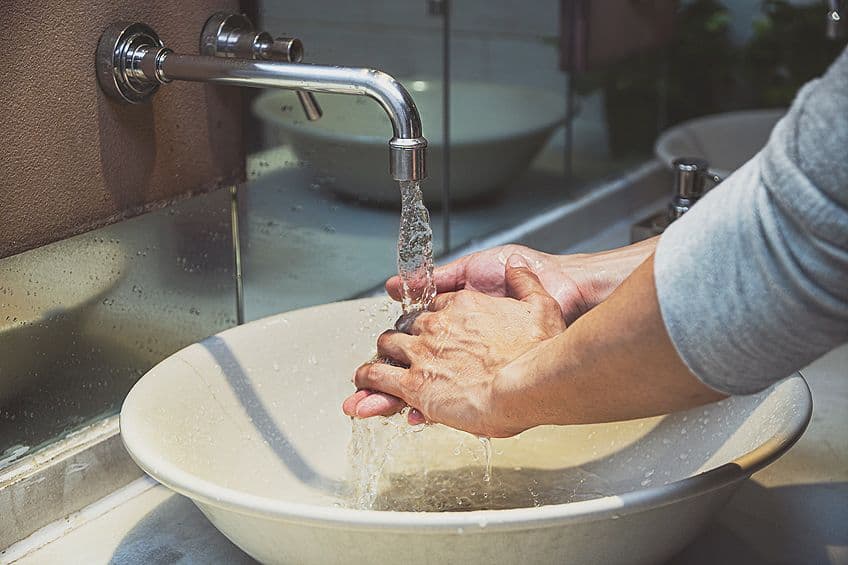
We recommend starting with a piece of soft steel wool and gently scrub away in a circular momentum as gently as possible with a bit of liquid soap and hot water. This prepares the skin for your remedy while removing the excess stain. When your skin starts to feel sensitive, stop scrubbing and start applying your application.
Other types of scrubber brushes that work well in the process of removing skin stains are luffa sponges, cooking pan scrubbers, and circular exfoliating skin brushes.
Methods for Removing Stain from Hands
Both natural and chemical applications for wood stain removal work quite well, depending on the stain and the sensitivity of your skin. Priority takes its form in the safety of the application and the speed at which you want it removed. Below are some of the most used methods for removing stains from the skin in both a natural and chemical approach.
Natural Removal:
| Oil-Based Removals | Water-Based Removals |
| Vegetable Oil | White Vinegar |
| Citric Acid |
Chemical Removal:
| Type of Wood Stain | Removal Method |
| Water-Based | Acetone |
| 80% Denatured Alcohol | |
| Oil-Based Wood Stains | Mineral Spirits |
| Turpentine | |
| Applicable for both | Mineral Spirits |
Natural Skin Stain Remover
Natural removal applications are for people who would like to do things naturally or have sensitive skin. Most of these methods use common household items that can be found in your pantry. The natural removal methods shown below are some of the most widely used applications in removing wood stains from the skin. Here are some of the pros and cons of using natural methods for removing wood stains from skin.
- Safe
- Commonly found around the house
- Inexpensive
- Requires more elbow grease
- The removal process can take longer
- Multiple applications may be needed
Using Vegetable Oil to Remove Oil-Based Stains
Vegetable oil is great for removing oil-based stains because it binds to the wood stains and removes them from your skin. You can follow these simple steps to easily remove oil-based wood stains from your skin naturally.
- Step One: Dampen a cloth generously with oil, add a few pinches of fine sand or salt for abrasiveness.
- Step Two: Start scrubbing your affected area for between 2-5 minutes continuously until removed. Repeat the process if needed to remove all of the stains. Rinse with soapy warm water afterward.
Using Vinegar to Remove Water-Based Stains
Vinegar is one of the best natural remedies for removing stains. Being water-based, it has better success removing water-based wood stains from your skin. Follow these three steps to easily remove the wood stains from your skin.
- Step One: Dip an ordinary kitchen sponge in a small bowl of white vinegar and apply it to your site.
- Step Two: Take your scrubber brush and scrub continuously for 2-3 minutes, a pinch of fine sand can be added for extra strength.
- Step Three: If the stain is on your hands, wash your hands with white vinegar and add fine sand to help break down the stain. Rinse the area with soap and warm water after removing it.
Using Citric Acid to Remove Water-Based Stains
Citric acid is a natural acid that is extracted from citrus fruits which is also a powerful cleaner and stain remover. Its pure form is a white crystalline powder available in baking supply shops, and home improvement centers. Although natural and derived from fruits, its pure form can be hard on your skin and should be used with some caution. In these two simple steps, you can remove the stain from your skin.
- Step One: Start by using 1 teaspoon citric acid powder mixed with ½ teaspoon of water, form into a paste, and apply to your area.
- Step Two: Scrub the area gently with your scrubber for 2-3 minutes. Rinse with soapy warm water after removal.
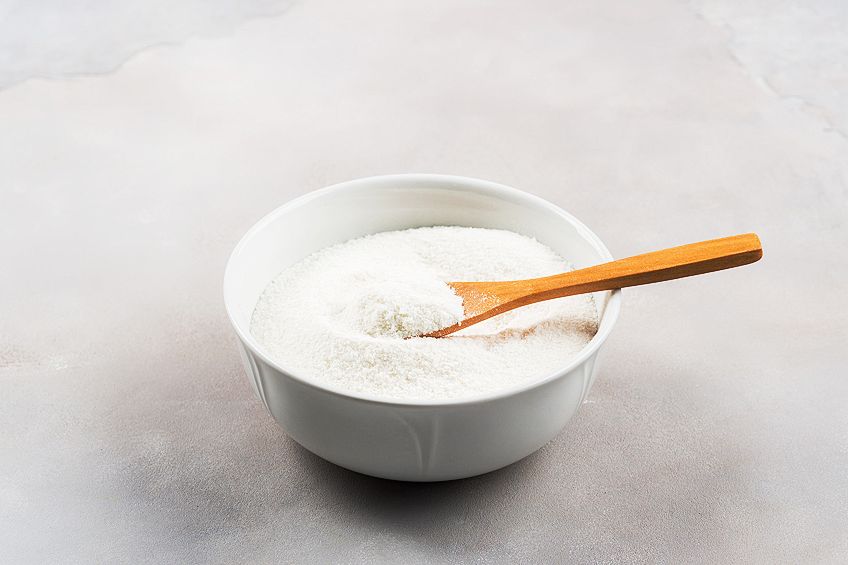
Chemical Skin Stain Remover
Chemical solvents tend to be quicker in the removal of skin stains than their natural counterparts. The key element in chemical removal applications is aligning the base of your solvent to the base of your stain. For example, if you have accidentally stained yourself with a water-based stain you will want to apply a water-soluble chemical solvent. If you have stained yourself with an oil-based stain, then remove it with an oil-based solvent. Make sure that your chemical solvent has a stronger PH than the stain itself, otherwise, it likely will not come off. Most chemical solvents can be found in your local hardware store. Here are the pros and cons of using chemical stain removers.
- Highly effective
- Removes stains very quickly
- Fast removal process
- Few supplies required
- Can cause unpleasant skin irritation
- Costlier than natural removers
- Highly flammable
- Hazardous to pets & children
- Can require precautionary & follow-up practices
Using Acetone to Remove Water-Based Stains
Acetone, otherwise known as nail polish remover, is a great stain remover for water-based stains. It is also one of the safest chemical solvents to be used on your skin, with unlikely side effects. Due to the high evaporation qualities of acetone, it is recommended to pour it directly on your stain area and scrub it with a clean rag.
- Step One: You will need to pour extra acetone liquid into your cloth because it evaporates too quickly using a scrubber.
- Step Two: Use the same circular momentum of application we have spoken about earlier and continue this process until your stain is removed.
Tip: No abrasive materials such as sand or salt are necessary when using chemical solvents.
Using Denatured Alcohol to Remove Water-Based Stains
Denatured alcohol is another effective and safe chemical solvent to use in stain removal. Denatured alcohol can be applied in the same fashion as acetone. Like acetone is also one of the safest chemical solvents for use directly on the skin.
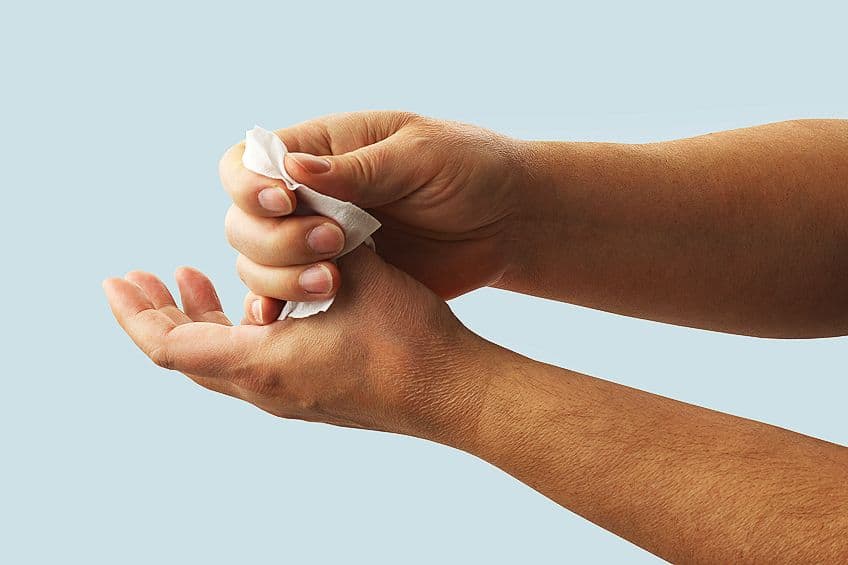
Using Mineral Spirits to Remove Oil-Based Stains
Mineral Spirits are about the fastest and most effective solutions for the removal of oil-based stains on your skin though also the most hazardous. Mineral spirits are a highly refined petroleum product that is strong and can leave your skin afterward with irritation and burning sensations.
- Step One: Apply your mineral spirit to a dry clean cloth and instead of a scrub motion you will want to take swipes at your affected area.
- Step Two: As your stain comes off, use a different part of your cloth that is clean to maximize stain removal.
- Step Three: Wash the affected area with warm soapy water immediately afterward and apply a moisturizer to your skin to reduce skin irritation.
We recommend only using mineral spirits if your stain removal cannot wait and of dire urgency.
Using Turpentine to Remove Oil-Based Stains
Turpentine is a chemical solvent that is derived from tree resin. It is safer to use on your skin than mineral spirits though still extraordinarily strong and to be used with caution. Turpentine is especially effective in the removal of varnish from your skin. Apply in the same manner as mineral spirits.
Using Stain Absorbents
Alternative natural substances can be beneficial in combination with both natural and chemical stain applications. These substances cannot be identified as stain removers on their own, instead, they help aid in the removal process by acting as adsorbents. They help to absorb stains first and then let the application take care of the rest. Some examples of absorbents are clay, gypsum, peat moss, and topsoil. These substances are generally made into a paste and applied to your affected area. They can also be combined with both chemical and natural applications and stain removing aids.
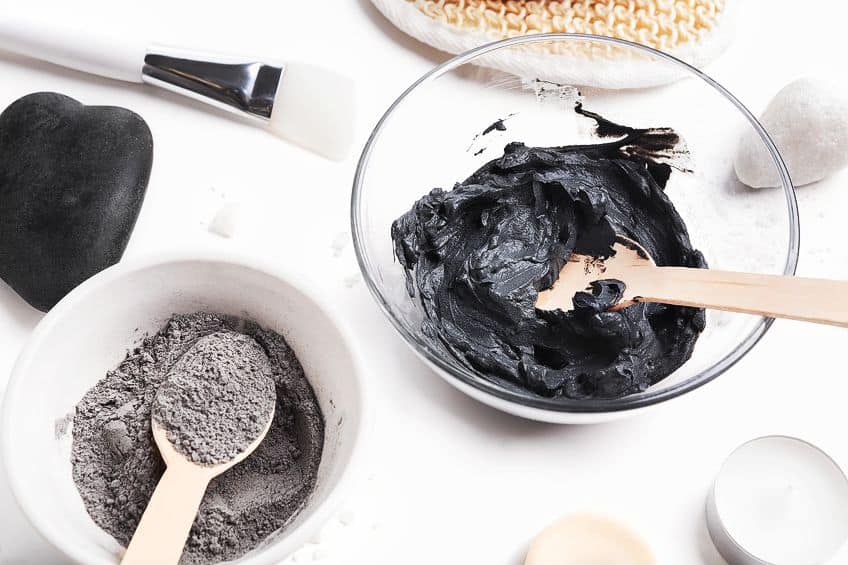
The Safety of Wood Stain Removers
Depending on your skin type we will need to bear in mind what kinds of remedies will both remove your stain yet not damage your skin at the same time. Woodworkers each have their take on this as many will simply dunk their hands in a bowl of spirits if they get a wood stain while others take a more conservative approach due to sensitive skin. This is an exceptionally good point as you do not want to make the cure worse than the problem.
Usually, natural remedies take a bit more elbow grease to get the stain off your skin. This could be mixing vinegar and fine sand with your hands. A more aggressive chemical option is to hand dunk in a bowl of white spirits, which will remove your stain instantaneously but may leave your skin with a rash and burning sensation for the next hour.
The rule of thumb with all applications, especially chemical solvents is to start small, see how your skin reacts, and work your way up from there.
Tips for Removing Wood Stain from Skin
For large surface stains on your skin, we must prepare the area with maximum exfoliation before our intended remedy. Large skin stains will require additional exfoliation with the use of our scrub brush. Failure to do so will result in much longer and arduous cleaning involved just to achieve the same stain removal objective.
In the case with a large varnish stain. Apply a spoonful of peanut butter to your affected area, work the peanut butter in for about 1 minute, remove with a clean and dry cloth and then begin with your scrubbing. Specifically, for vanish, peanut butter takes away the gluey texture from your skin and will allow your scrubber to prepare your skin area for remedy application.
Mineral spirits are one of the few exceptions that can remove oil, water, and resin-based stains effectively.
Fine sand can sometimes be difficult to source especially if you do not like near a beach or the desert. You can create fine sand with coarse sand with the use of a fine strainer. Simply pour 1 cup of course sand through a standard fine kitchen strainer. Shake until all fine sand has been extracted while discarding the coarse sand.
Preventive Measures for Wood Staining
When it comes to safety measures, prevention is the best path forward. A smart woodworker will prepare to prevent an accident from happening than having to find a solution for an accident afterward. Although no matter what, even all the protective equipment and gear we use for our woodworking practices, wood stains on our skin from time to time will happen even if we are not conscious of them.
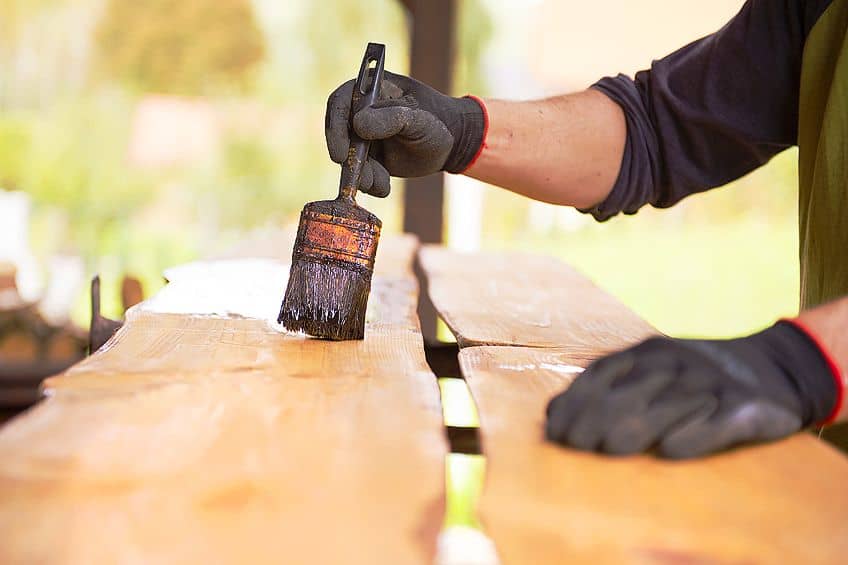
To reduce the frequency of wood stains on our skin here is a list of the necessary gear to use throughout your woodworking day to ensure the best possible coverage and protection especially when applying varnish, lacquer, or a wood stain onto your project.
- Long-Sleeved Shirt (Preferably a thick fabric)
- Second-Hand leather jacket with long sleeves
- Long armed leather gloves
- Tightly fitted safety goggles
- Long Pants
- One large leather tradesman smock (for best body coverage)
Prevention Tips
In addition to protective clothing and safety gear, another great preventive method to keep your skin protected is the actual amount of stain you coat your brush. Pay attention to brush off excess stain liquid from your brush when applying your stain. Most staining accidents are due to the over-saturation of stain on our woodworkers’ brush. Thin coats of stain can go a long way in the woodshop.
Another excellent prevention technique is to start your woodworking session by coating your arms and hands with a moisturizer or oil. Wood stains do not bond very well to hands, forearms, or skin in general that are pre-oiled or moisturized. If you do not mind going to work with a touch of grease, it can be a lifesaving method in preventing a wood stain from occurring.
Hopefully, you now have a good idea of how to prevent wood staining on your skin, and how to remove it if it does happen. Sometimes these accidents cannot be prevented, and it is easy to remove these stains if you know how to.
View our How To Get Wood Stain Off Skin web story here.
Frequently Asked Questions
Can Wood Stains Permanently Stain Your Skin?
Even the hardest to remove stains from your skin will eventually come off naturally. Our skin is a living organ that exfoliates and replenishes itself on its own. The short answer is no, wood stains will not permanently stain your skin.
Can Wood Stains On Your Skin Cause Long-Term Health Problems?
If you are an active woodworker that falls under the category of having an accidental stain once a month and quickly addresses it and removes it, I would say your chances are slim for having long-term health side effects. However, a clumsy woodworker who ends up having stain accidents weekly, then this is something to seriously address and take into consideration to avoid health defects.
Do Good Brushes Reduce the Chance of Staining?
While there are many types of high-performance woodworking brushes specifically designed for maximum stain efficiency and performance, if you are a regular woodworker, skin wood stains are an inconvenient reality of the craft. The best-case scenario is to limit the number of staining projects you wish to complete each year to reduce the likelihood of accidents.
Can You Find Wood Stains That Do Not Stain Your Skin?
There are many types of natural pigments, oils, and stains that are wonderful to use on wood and give excellent finishes, that will not leave your skin stained. Some good examples to explore using are linseed oil, walnut oil, hemp oil, tung oil, walnut hull powder pigment, tobacco powder pigment, coffee staining for wood, calcite staining, and more.

I have been into woodworking since 2005 and woodturning since 2011. Because of my love for wood and woodworking, I started woodhappen.com to teach other enthusiasts about how to finish and seal wood, the best woodworking tools, the different types of wood, and everything else related to woodworking! Read more about me here.

